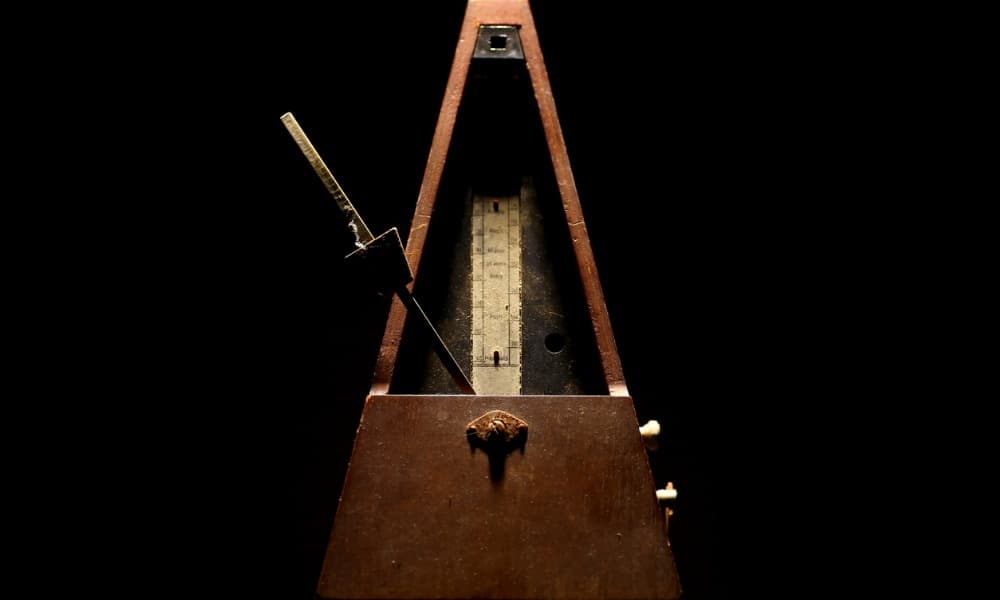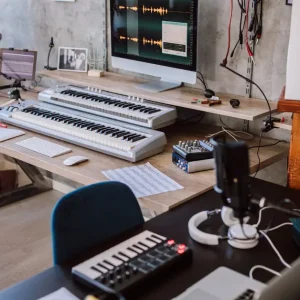Key Takeaways:
- Any musician can have trouble with rhythm occasionally.
- Everyone has a sense of rhythm, but some people haven’t honed theirs.
- Many exercises and activities help make your sense of rhythm stronger.
Have you ever seen someone dance that just amazed you or heard someone play an instrument with such perfection that it put a lump in your throat? People like that have an innate understanding of rhythm and music that is difficult for the rest of us to comprehend.
They seem to understand things like tempo, beat, and rhythm without even trying and can effortlessly play or hum a tune they only heard once. Not everyone is born with musical intelligence, however. Many people find it hard to keep a tempo or clap along to a beat.
A weak sense of rhythm is unfortunate, but it’s nothing to stop a real music lover. Even the most accomplished musicians struggle with rhythm now and again, and there are many activities and exercises you can use to boost your rhythmic intelligence.
This guide explores the concept of rhythmic intelligence and simple ways to improve your sense of rhythm.
Rhythmic Intelligence
Musical intelligence, or rhythmic intelligence, is the ability to naturally understand musical notes, sounds, and patterns. Everyone has musical intelligence to some degree – it’s why we learn the alphabet with a song and get advertising jingles stuck in our heads.
Musical intelligence can be strengthened, just like a muscle. Performing activities involving tempo, beat, and patterns reinforce our natural rhythm and make it easier to latch onto the next time.
7 Easy Ways to Improve Your Sense of Rhythm
Many musicians feel rhythmically disadvantaged at some point, not just the newbies. It may happen when learning a polyrhythm (two rhythms going at once), a new rhythm pattern, playing with a metronome, or the first few times in an ensemble, but a few simple exercises can get you back on track. Here are a few to try:
Dance
Close your eyes and listen to a song you love. It doesn’t matter what genre or how old it is. Humans can conceptually understand rhythm and beat, but we can feel them in our blood and bones, too. Let your body move with the music. Soar when it soars and glide when it glides.
Start with small movements tuned into the most basic bottom notes of the song. Find the underlying beat and hold it in your focus. Move with it. You’ve found the basis of rhythm.
Get Familiar with a Metronome
A metronome is your best friend if you’re having trouble with rhythm. It forces you to play at the correct tempo – no rushing or dragging your beats. Beginners often lack awareness of rhythm, and a metronome enhances your natural rhythm by pulling your focus to the beat and which notes are played.
It is important to use a metronome in conjunction with other techniques rather than using it on its own. The constant clicking can become nerve-wracking and serve as a deterrent to practicing if you’re not careful.
Train Your Senses
Our brains become enamored with things the more we focus on them – whatever that object may be – and once the brain starts caring about something, the experience of it becomes more nuanced and complex.
The musicians with the best rhythm have trained their minds and body to pick up on the slightest of rhythms in their environment. They have a highly sensitive rhythm conscious that tells them when an instrument comes in late or if the whole piece would sound better, just a little slower.
Develop your own rhythm consciousness through regular practice and challenging yourself in your art.
Play with a Pro
You don’t have to hire Yo-Yo Ma, or anyone else, to learn from a professional. Find a teacher or more advanced student and play alongside them.
Metronomes help build internal time, but playing with another human enables you to develop a natural feel for timing.
Beat Dividing
Beat dividing is a technique musicians use to ensure their timing and rhythm are impeccable. Each beat is divided in half or more and counted in your mind. Instead of counting beats as 1-2-3-4, they’re counted as 1-and-2-and-3-and-4. Some musicians break them down even further, such as 1 e and a, 2 e and a, 3 e and a, 4 e and a.
This technique helps you find exactly where to place each note, especially during complex rhythms.
Listen to Yourself Play
Record yourself playing once you feel like you have the rhythm of a piece down. Start a metronome when you play it back. Note the places where you veer off track and when you are playing perfectly in tempo. The next time you play the piece, pay attention and improve your performance.
Practice Regularly
They don’t say “practice makes perfect” for nothing – in fact, you can’t get perfect without it. Improving your sense of rhythm takes regular, intense practice. Shoot for short exercises every day and longer, more intense practice sessions every other day to get the fastest results.
Tapping out a radio beat on the steering wheel on the way home from work is another way to tune up your rhythmic vibes. Find ways to incorporate rhythm into your daily life, and you’ll soon find it becomes second nature.
Feeding your inner rhythmic intelligence is paramount to improving your musical talent in general. Every skill must be fed and nurtured to grow, and music is no different. Be patient as the new information settles into your subconscious, and you’ll be amazed at your own aptitude.
Music Lessons Provide a Fundamental Basis for Rhythm
It’s always easier to learn something when a seasoned professional is on hand to guide you. Sloan is a music school that provides lessons (private, group, virtual, etc.) in various musical disciplines. We sell top-of-the-line musical instruments and accessories, plus instrument rental programs. Contact Sloan School of Music for more information about musical instruments, accessories, lessons, and more.










